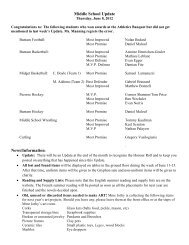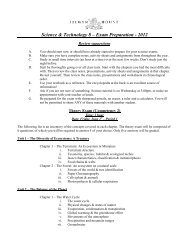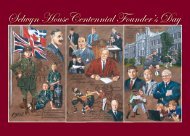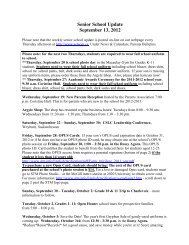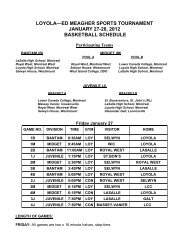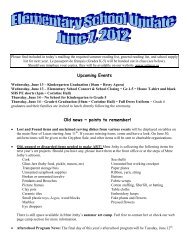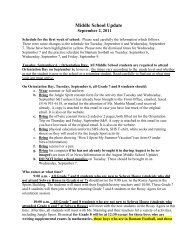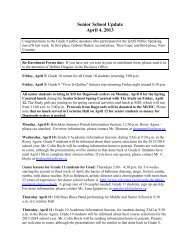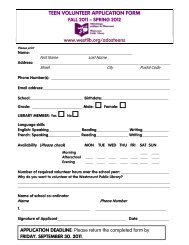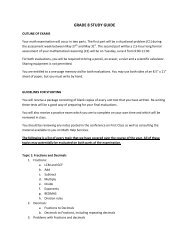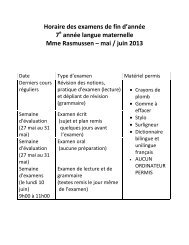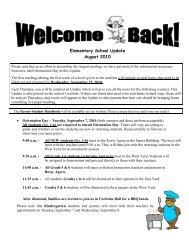Senior English Critical Writing Handbook - Selwyn House School
Senior English Critical Writing Handbook - Selwyn House School
Senior English Critical Writing Handbook - Selwyn House School
You also want an ePaper? Increase the reach of your titles
YUMPU automatically turns print PDFs into web optimized ePapers that Google loves.
SETTINGSetting includes (1) the general location of the action and the specific locales of its incidents; (2)the atmospheres of these locales; (3) the historical time during which the action proceeds and theduration of its incidents; and (4) the nature of the social milieu of the characters, including itspolitical, social, and economic institutions (parliament, marriage customs, employment). Theessay on setting ought primarily to estimate the importance of the setting in determining theaction or the effect of the work in question. Setting will figure largely in Utopian and futuristicfiction, in stories involving the journey motif, and in romances (stories in which the supernaturalintervenes in the action in a magical way).The essay ought to begin by identifying the setting in time and space. This identification maybest be accomplished in a single sentence in which the author appears as subject: “Steinbeck setsCannery Row in the Monterey, California of the Depression years just prior to World War II.”Two or three sentences descriptive of the general atmosphere should follow, working toward thelast sentence in the introductory paragraph, the thesis statement. The thesis should express thestudent’s opinion as to whether the setting serves merely as a background to the action, as amotivating force behind the plot, as the essential element in the atmosphere, or as a medium forconveying theme. (Presumably, the student will not write on setting if it does not contributeheavily to the action of the book.) To complete his thesis statement, the student should suggestthe most important bits of evidence with which he intends to support his opinion.Setting and PlotIn many stories, what happens is so closely related to the setting that we can virtually say that theaction is determined by it. Fiction in which travel forms an important pattern exhibits thistendency: the Mississippi River, for example, affects the actions of Huck Finn; the Oklahomadustbowl affects the actions of the Joads in The Grapes of Wrath. Many stories, such asHemingway’s A Farewell to Arms and Bronte’s Wuthering Heights are organized geographicallyaround two opposed symbolic settings.The story of fixed locale (an island, a ship, an airplane, a prison, a town) generally depends to aneven greater extent upon events that arise out of the character of the setting. The plot of The Lordof the Flies, for instance, arises out of the isolation of a group of schoolboys on an island; and thesetting lends philosophical depth to Golding’s theme, since we accept the island as a microcosm(a small world that mirrors in representative form all the features of the larger world, themacrocosm). Such a symbolism shows that if setting is important to a novel beyond serving as abackground to the action, it generally has a part both in determining the action and in suggestingideas or themes.Setting and ThemeWriters who present setting as a determinant of action point to the age-old thematic dispute aboutfree will: does man determine his own destiny from within himself? or do forces lying outsidehis control determine his destiny? The writer supports one or the other of these alternatives byresolving the conflicts that develop the plot. In her book Anthem, Ayn Rand, for example, plotsthe conflict between her protagonist and the collectivist society as a successful rebellion of the30



